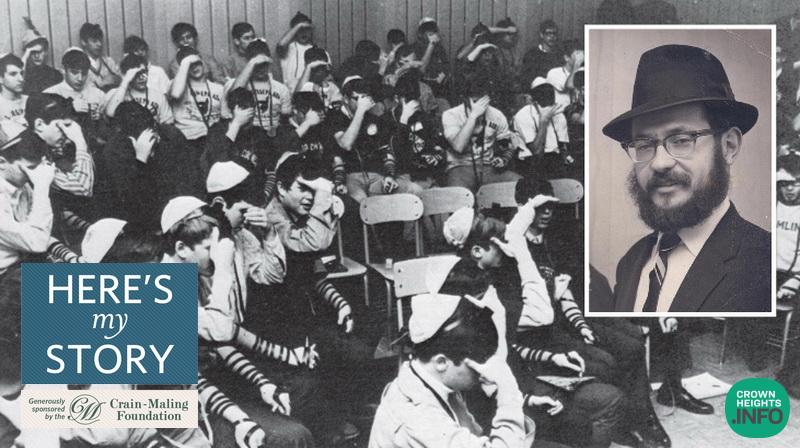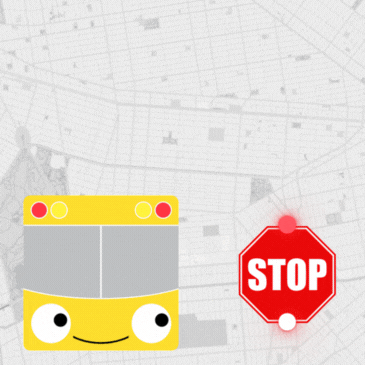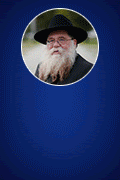
Here’s My Story: The Right to be Different – and Right
Rabbi Moshe Feller
Click here for a PDF version of this edition of Here’s My Story, or visit the My Encounter Blog.
Just before the Six-Day War in 1967, the Rebbe initiated a campaign to encourage Jewish men to put on tefillin. His emissaries in Israel responded by putting tefillin on with the soldiers, and the campaign spread worldwide. The Rebbe was the only leader who gave our people hope at that time, with the help of this campaign, and so, when the war ended in a great victory, setting off a tremendous awakening among Jewish people, tefillin became a symbol of that victory. Ariel Sharon, one of the heroes of that war, was photographed wearing tefillin at the liberated Western Wall.
The Rebbe was very pleased with all this, but eventually, enthusiasm for this campaign began to wane. Six months later, around Chanukah time, the Rebbe put out a call to rev things up again by going out to the youth and encouraging them to put on tefillin.
As it happened, I had just the opportunity. After moving to the Twin Cities as a Chabad emissary, I had done a lot of work with the B’nai B’rith Youth Organization (BBYO), and that Chanukah, I was invited to be a keynote speaker at their regional convention. The convention was taking place in a high school in Highland Park, S. Paul, close to where we lived.
Three very different speakers had been invited for the three-day event: A hippie from the famous Haight-Ashbury district of San Francisco, a member of the Black Panthers, and me. I would be opening the second day of the convention, speaking to about 200 Jewish boys and 250 Jewish girls.
Immediately, I wrote to the Rebbe about the convention — with an idea.
Looking over the program beforehand, I had noticed that something was missing. “You’re a Jewish organization,” I told the organizers. “How come there are no prayer services here?” BBYO was not an organization devoted to promoting religious observance, but still, I insisted that there should be services before I spoke, with the boys putting on tefillin and the girls having a special service of their own. They agreed and gave me half an hour, from 8:30 to 9:00 in the morning, for tefillin and prayer.
I had really stuck my foot in my mouth with this plan, because now I had a problem: Where was I going to come up with two hundred pairs of tefillin?
A few months earlier, two yeshivah students named Shmuel Shpritzer and Shalom Ber Kalmanson had come out to the Twin Cities from New York for a summer visitation program, so I called them to see if they could come back. “We have an opportunity to really rev up the tefillin campaign,” I said over the phone, “but I need you to get as close as you can to two hundred pairs of tefillin.” Shpritzer and Kalmenson went off running to every Judaica store in New York and managed to buy 137 sets of tefillin, at $18 each. This was a long time ago; today you can’t even buy the leather straps for that much.
Of course, that presented another problem: Where was I going to get the money for so many pairs of tefillin? But when I wrote about what I was doing to the Rebbe, he responded: “This is an extraordinary tefillin campaign. The cost will be covered from here.”
The two yeshivah boys flew in with 137 pairs of tefillin, and together with Rabbi Asher Zeilengold, the rabbi of our synagogue, we went to the convention on the next day, which was a Wednesday. Before the official opening on that first day, we got about twenty or thirty boys to put on tefillin.
Then, on Thursday, Rabbi Zeilengold put together a creative prayer service for the girls in the school auditorium, while Shpritzer and I met with the boys in the music room. With the boys sitting around the room on tiered bleachers, the director of B’nai B’rith, a good friend of mine named Ralph Birnberg, served as a model for how to put on tefillin. In the meantime, we ran around the room making sure that
everyone was wearing them correctly.
We recited the blessing together and then, because it was early enough, we recited the morning Shema, so that way we were able to fulfill two mitzvot at once. We did the same thing with the sixty remaining boys, and managed to finish within half an hour.
Then, for my keynote speech, I spoke about the convention’s theme: The Right to Be Different. “You have the right to be different,” I told the crowd, “but only if, in being different, you are being right. And the only way to know what is truly right is to look Above. It’s G-d Who determines absolutely what is good and what is not; otherwise, everything is just relative.”
Afterwards, I called the Rebbe’s secretary, Rabbi Hodakov, to proudly report that we had put tefillin on with 200 boys.
Feeling exuberant, I hadn’t realized that the Rebbe himself was listening in on another extension. Suddenly, I heard his voice, in Yiddish: “And what about tomorrow?” the Rebbe asked.
“I don’t want to overdo it!” I said. The fact that B’nai B’rith had happily opened their convention with tefillin in this way was already unprecedented.
“In this, there is no overdoing,” he replied. “You should go and tell them that they must do it again tomorrow.”
I was saying, I don’t want to overdo it, but the Rebbe was telling me, do it again!
Then he asked, “Was the press there? Television?” And then, “Did you light Chanukah candles?”
Now, I often invite the press to our events, but this wasn’t our thing — it was a BBYO event. Still, the Rebbe wanted this to be a real public statement, and something that would be seen.
Then he added, “Tell them that we will pay fifty percent of the cost for any boy who wants to buy a pair of tefillin.”
You can imagine how I felt as I went back to tell all of this to Ralph Birnberg. I whispered a chapter of Psalms and went to speak with him. “The Rebbe was so pleased that the convention started with tefillin,” I stammered, “that he suggested we do it again tomorrow.” I waited with bated breath.
“Great idea!” replied the director.
“The Rebbe also said he’ll cover half the cost for any boy who wants to buy tefillin,” I added, to which Ralph responded: “And B’nai B’rith will pay another twenty-five percent.” Now, each boy could buy a set of tefillin for $4.50.
When I reported to Rabbi Hodakov that we would be able to do everything that had been asked of us, he called me back about two minutes later to say that the Rebbe had written a little note for me: “Thank you, thank you, thank you for the good news.” One “thank you” from the Rebbe — or “teshuot chein,” in the Hebrew expression he often used — was a big deal. Two was amazing. Three was extraordinary.
The next day, we did it again. We managed to obtain some more tefillin in the meantime, and Rabbi Zeilengold again led a special prayer service for the girls with Modeh Ani, Shema, and an inspiring sermon.
Everything worked out beautifully, and the story was covered in every Anglo-Jewish newspaper in the world. Sometime later, I heard that a certain rabbi from Baltimore was visiting the Rebbe, and saw that there were pictures of us putting on tefillin with the boys on his table.
“In general,” the Rebbe remarked to the rabbi, “I am not an excitable person. But from this, I am excited.”
Rabbi Moshe Feller has served as the leading Chabad emissary to Minnesota since 1961. He was interviewed in November 2005 and November 2010.













P. McDonald
The price of tefillin has sky rocketed since then